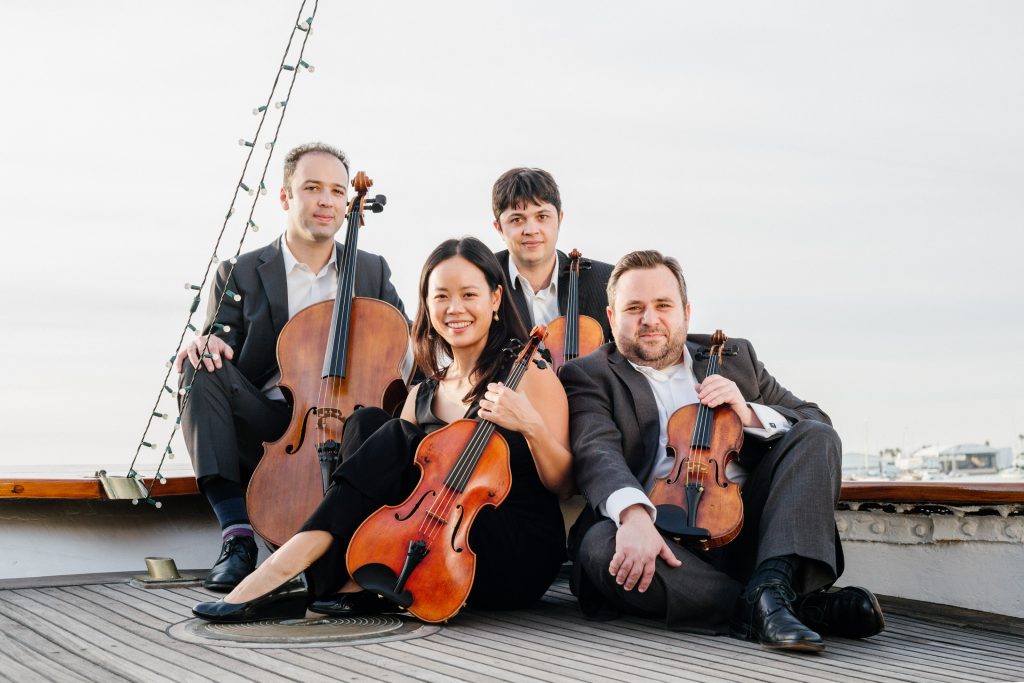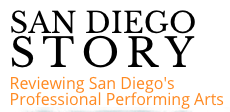Hausmann Quartet Pairs Haydn’s ‘Emperor’ Quartet with Terry Riley
The Hausmann Quartet’s latest installment of its Haydn Voyages at the San Diego Maritime Museum on Sunday, March 31, offered a pair of Haydn String Quartets—including the beloved C Major “Emperor”—a plush work by Terry Riley called “G Song,” and three Armenian Folk Songs arranged for string quartet.

Hausmann Quartet: (from left) Alex Greenbaum, Angela Choong, Isaac Allen, Bram Goldstein [photo (c.) Samantha Zauscher]
Inasmuch as Haydn’s set of six string quartets that form his Opus 76 is his final collection of a musical genre he essentially invented, it displays a structural and melodic virtuosity of the highest rank. Hausmann gave the C Major Quartet, Op. 76, No. 3, one of the most sophisticated, polished performances to date on this Haydn Voyages series. The performers infused the Cantabile, the movement of variations based on Haydn’s exalted hymn to Emperor Francis II, with a glowing serenity that allowed each variation to unfold in pristine splendor. They heated up the drama of the Finale with its florid contrapuntal exchanges, reveling in the sumptuous combinations Haydn devised for these musical gladiators.
By comparison, Hausmann’s program opening Haydn offering, his much earlier G Major String Quartet, Op. 9, No. 3, displayed an affable charm that did not ask much from the listeners. Nevertheless, Hausmann handled its nimble themes elegantly, maintaining a lucid balance throughout its four movements. Who could dismiss the appeal of his gently rolling triplets in the center of the Largo movement or ignore the urgency of the Presto?
Choosing three Armenian Folk Song arrangements added ethnomusicological elan to this program, a foray into modal harmonies that contrasted to aptly to Haydn’s orthodox western tonality. First violinist Isaac Allen accomplished the heavy lifting of “Vagharshbadi Dance” spinning out with relish its lively, athletic theme with ample assistance from second violinist Bram Goldstein. “Clouds,” the program’s second traditional song arranged for string quartet by S. Aslamazyan, portrayed a poignant lament, played persuasively by Allen in the highest register of his instrument. Composer Mary Kouyoumdjian took a popular early 20th-century recording titled “Groung” [Crane] and crafted a string transcription to sound like the vocalist on the record. Whether this is a faithful transcription, I cannot say, but Allen did apply a liberal amount of portamento to his rendition of the vocal line.
The other members of the Hausmann Quartet are violist Angela Choong and cellist Alex Greenbaum. The ensemble will resume Haydn Voyages on September 15, 2019, but on Sunday, April 14, they will present their traditional Lenten performance of Haydn’s “Seven Last Words” quartet, this year at the Luce Loft in the East Village.
The Hausmann Quartet presented this concert on March 31, 2019, at the Maritime Museum of San Diego in downtown San Diego at the edge of San Diego Bay.
